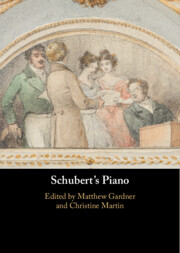Book contents
- Schubert’s Piano
- Schubert’s Piano
- Copyright page
- Contents
- Figures
- Tables
- Music Examples
- Notes on Contributors
- Acknowledgements
- Abbreviations and Conventions
- Introduction
- Part I The Piano in Schubert’s World
- Part II Instruments and Performance
- Part III Sound and Musical Imagery
- Part IV Understanding Schubert’s Writing for the Piano
- Select Bibliography
- Index
- References
Select Bibliography
Published online by Cambridge University Press: 31 August 2024
- Schubert’s Piano
- Schubert’s Piano
- Copyright page
- Contents
- Figures
- Tables
- Music Examples
- Notes on Contributors
- Acknowledgements
- Abbreviations and Conventions
- Introduction
- Part I The Piano in Schubert’s World
- Part II Instruments and Performance
- Part III Sound and Musical Imagery
- Part IV Understanding Schubert’s Writing for the Piano
- Select Bibliography
- Index
- References
Summary

- Type
- Chapter
- Information
- Schubert's Piano , pp. 324 - 346Publisher: Cambridge University PressPrint publication year: 2024

